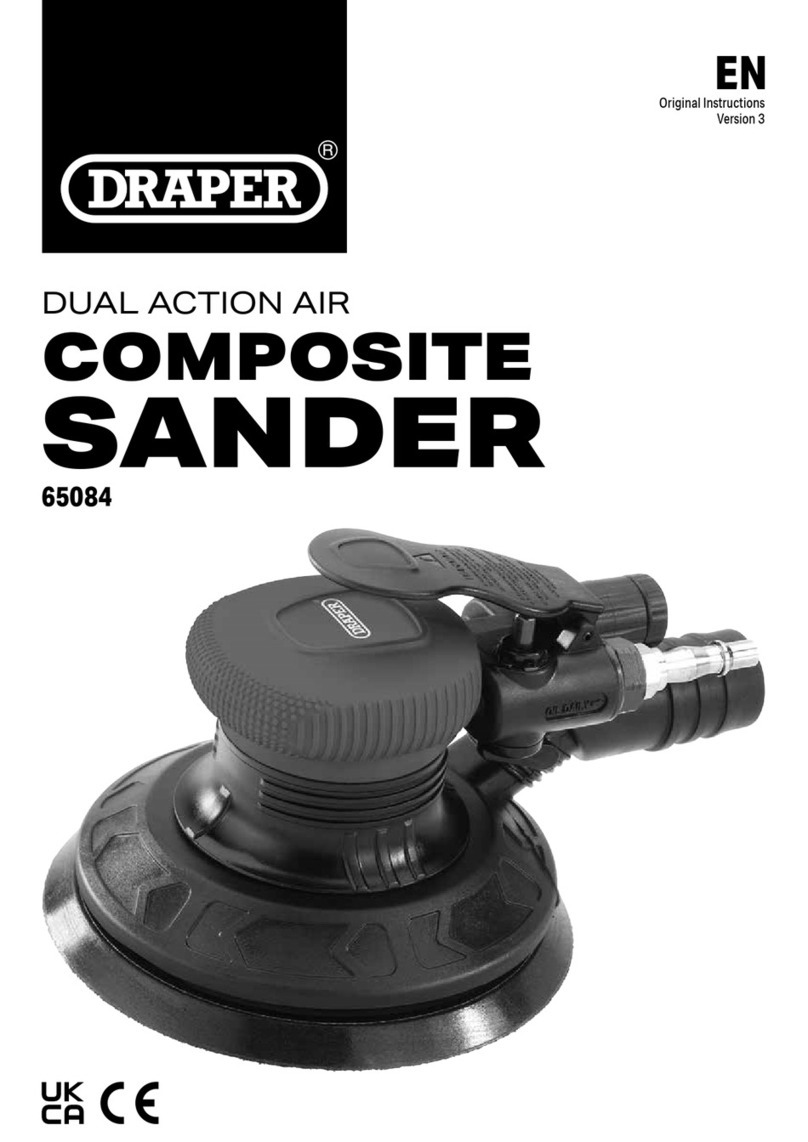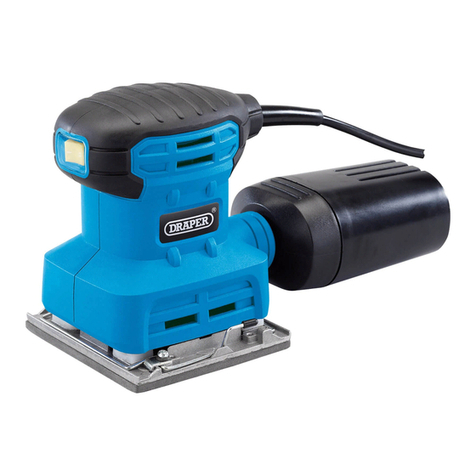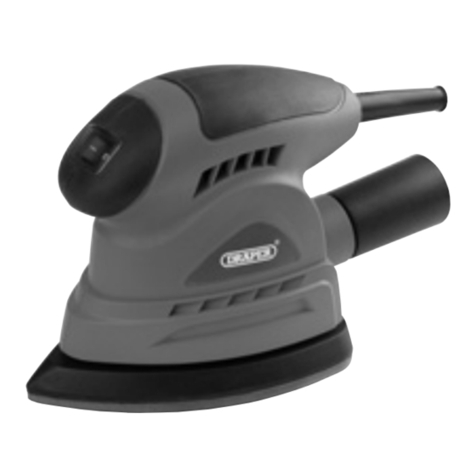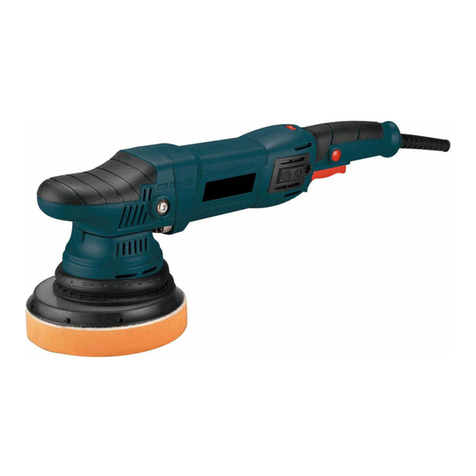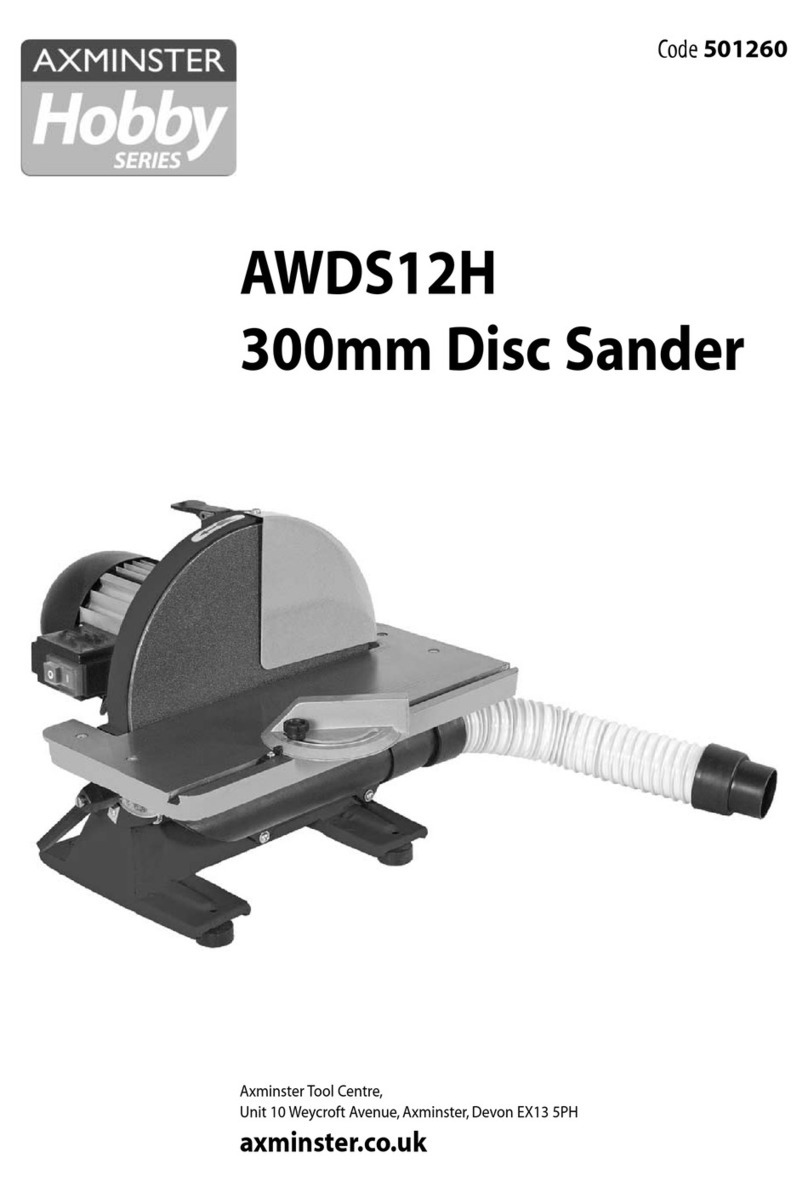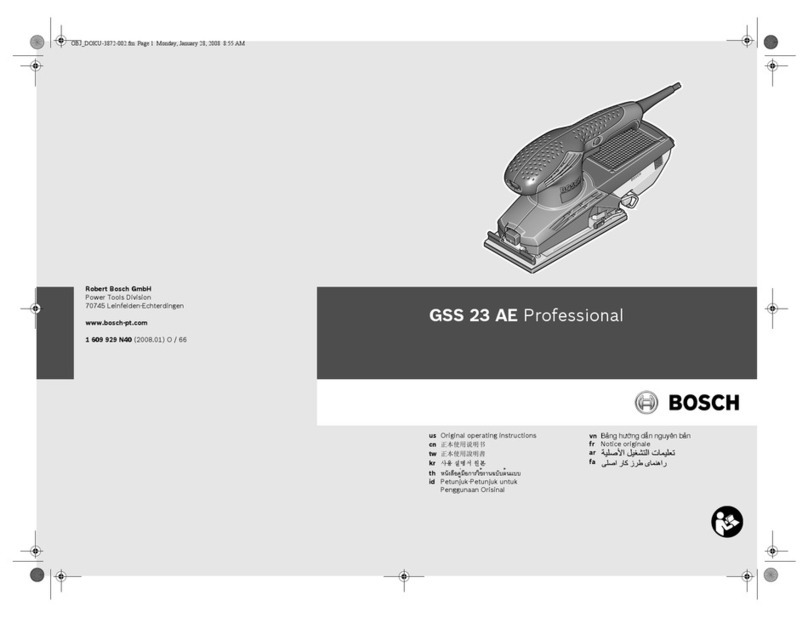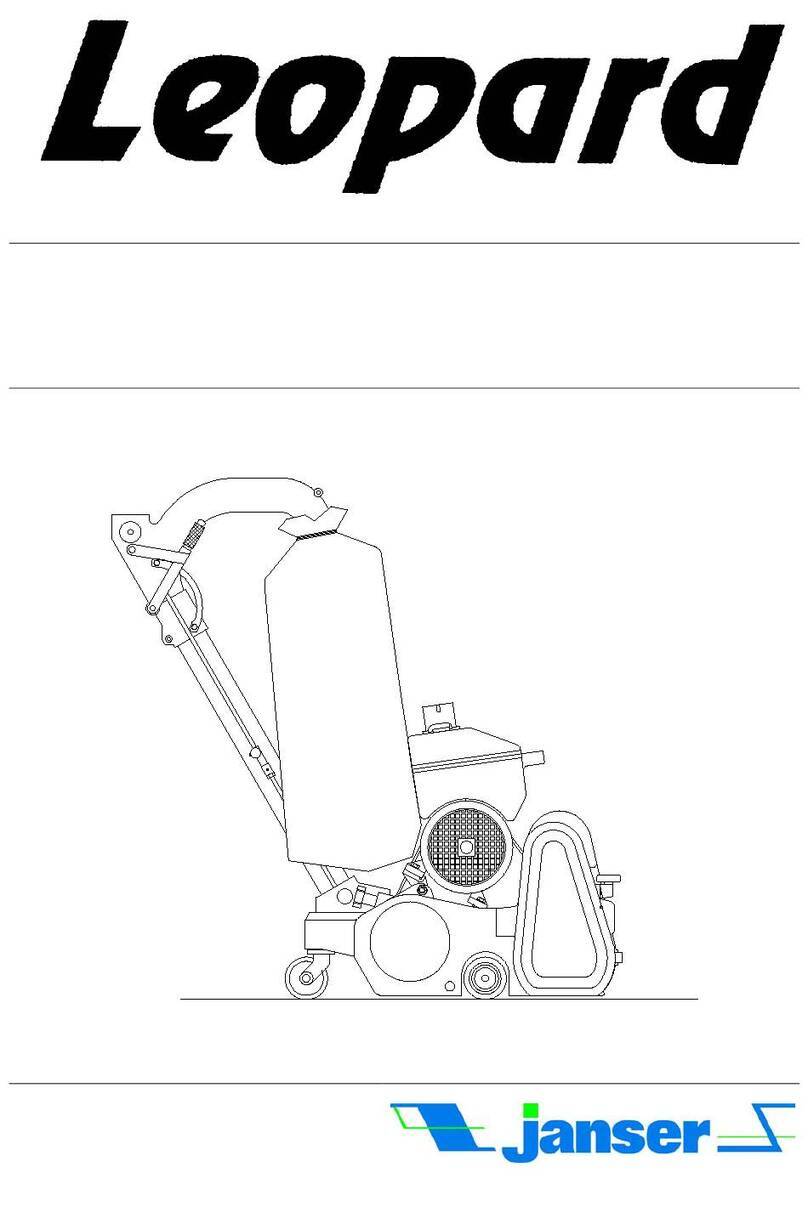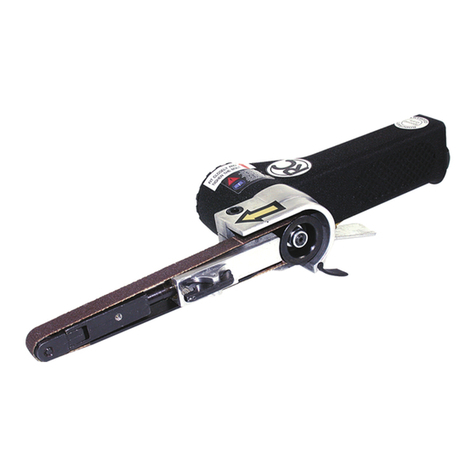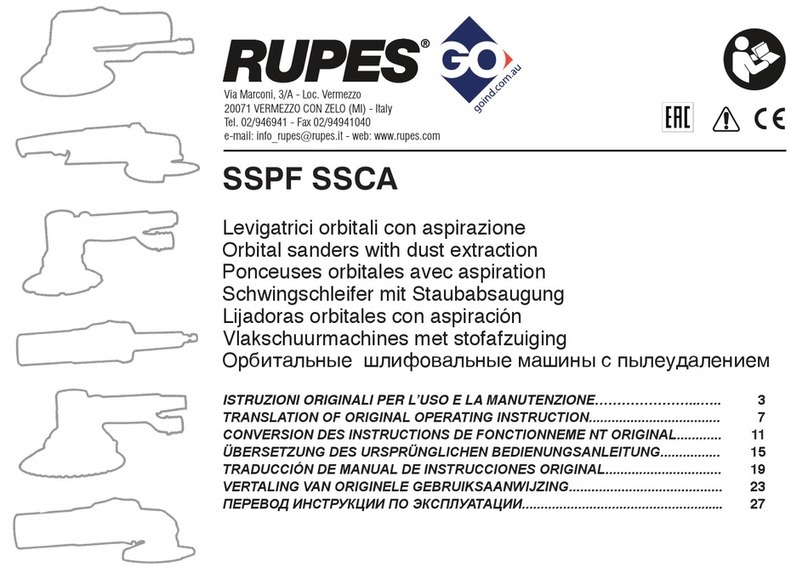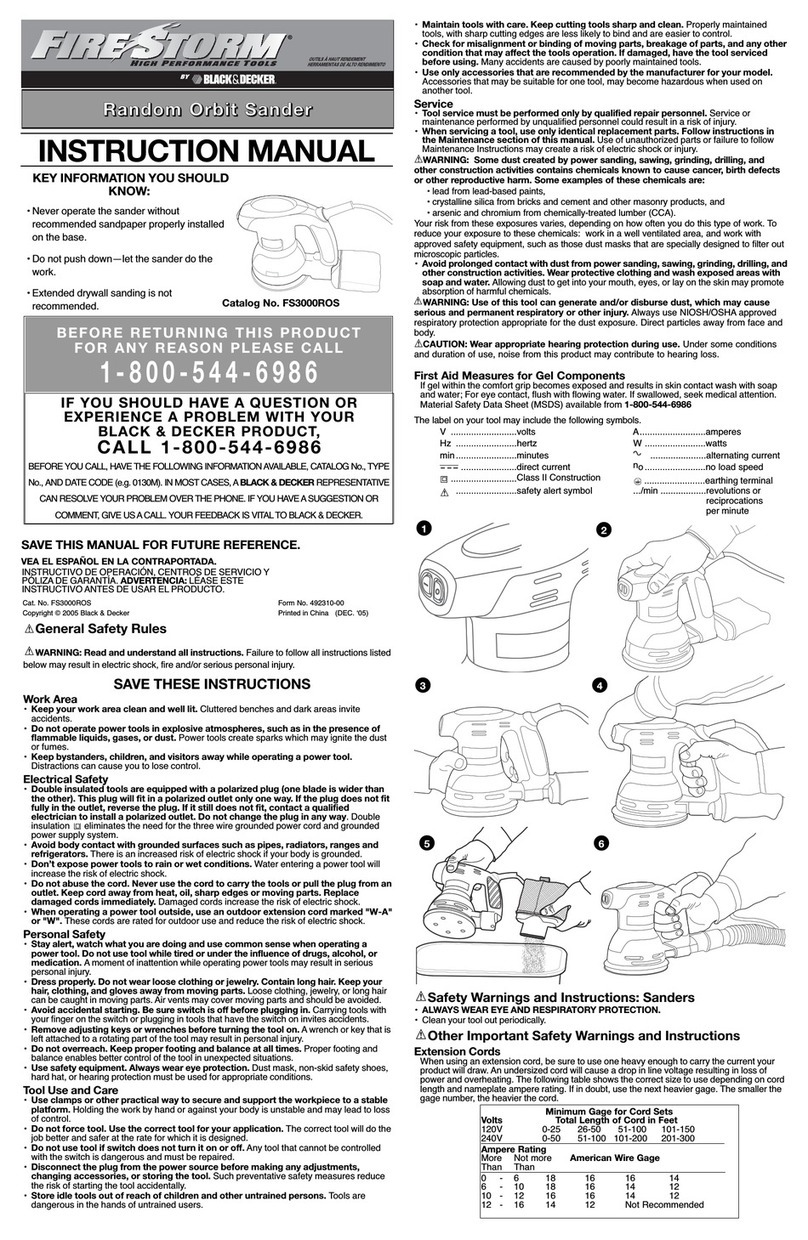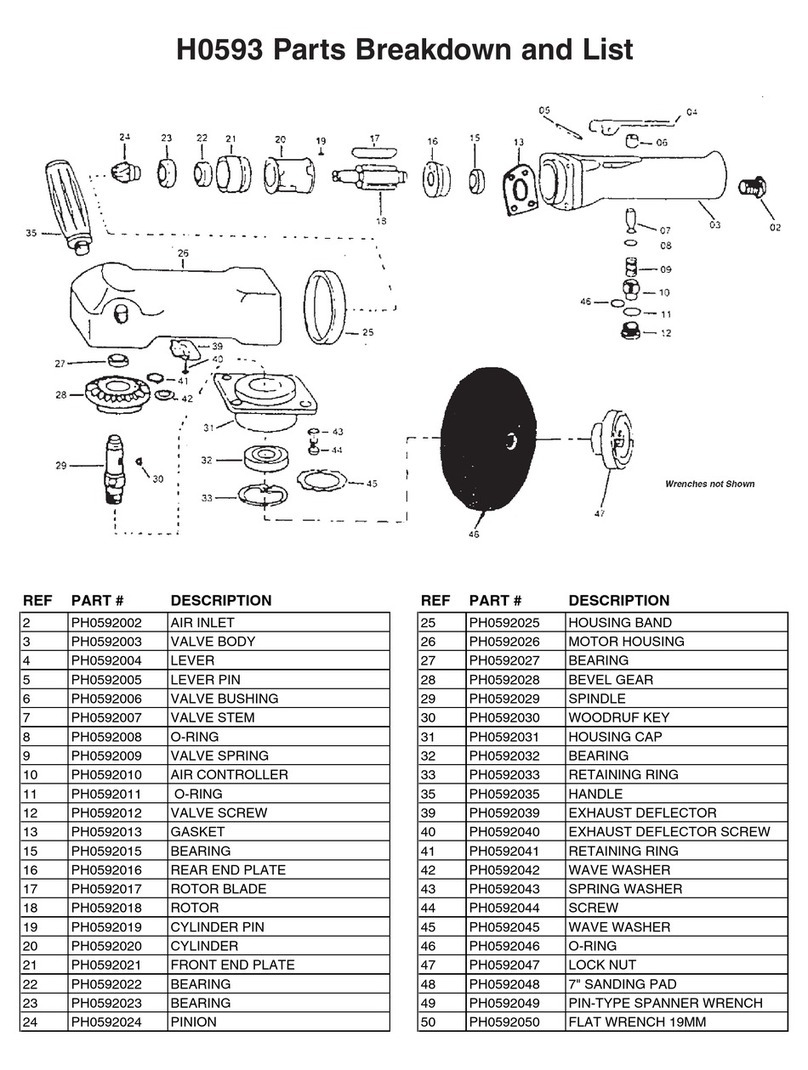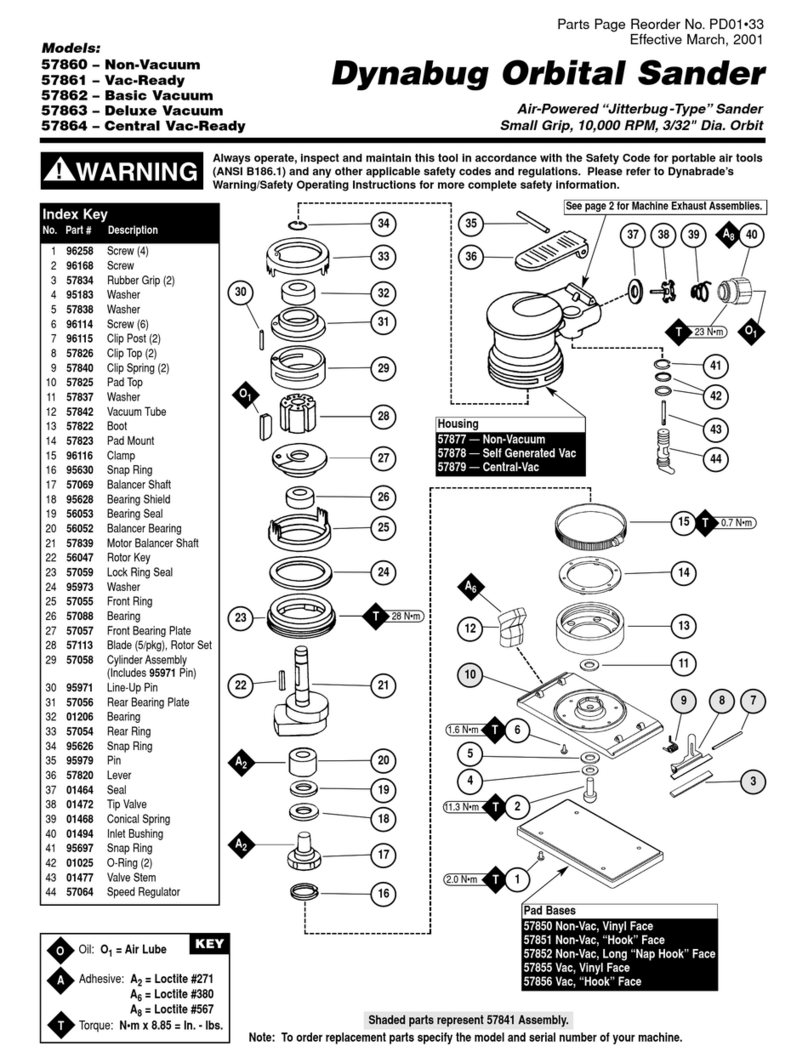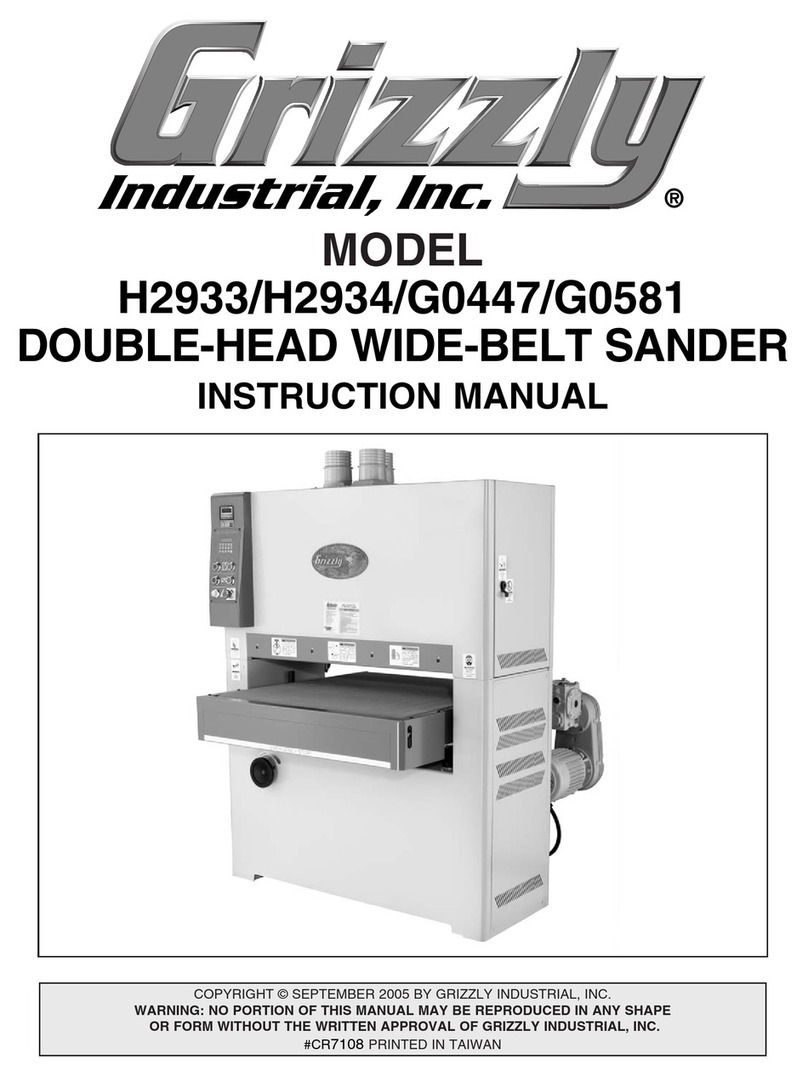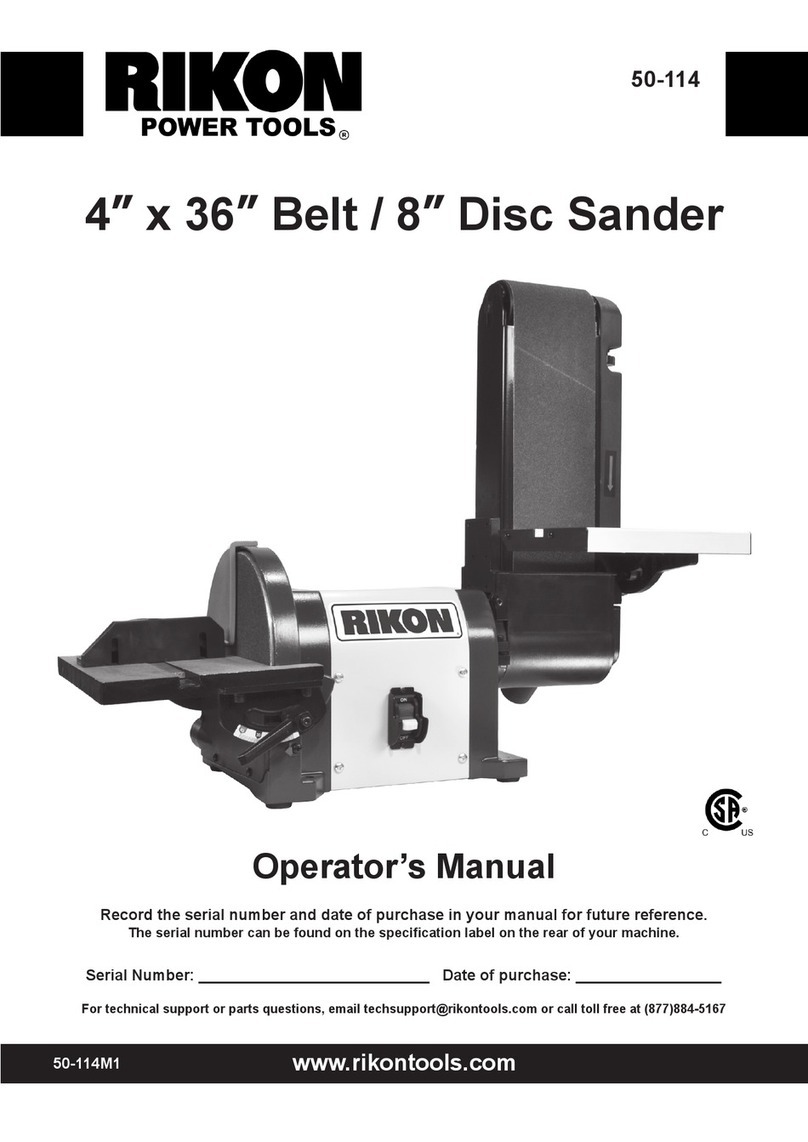Draper 65084 User manual

DUAL ACTION AIR
COMPOSITE
SANDER
65084
These instructions accompanying the product are the original instructions. This document is part of the product, keep
it for the life of the product passing it on to any subsequent holder of the product. Read all these instructions before
assembling, operating or maintaining this product.
This manual has been compiled by Draper Tools describing the purpose for which the product has been designed,
and contains all the necessary information to ensure its correct and safe use. By following all the general safety
instructions contained in this manual, it will ensure both product and operator safety, together with longer life of the
product itself.
All photographs and drawings in this manual are supplied by Draper Tools to help illustrate the operation of the
product.
Whilst every effort has been made to ensure the accuracy of information contained in this manual, the Draper Tools
policy of continuous improvement determines the right to make modifications without prior warning.

1.1 INTRODUCTION:
USER MANUAL FOR: Dual Action Composite Air Sander
Stock No: 65084
Part No: DAT-APS-SF
1.2 REVISIONS:
Date first published November 2014.
Date of first revision: July 2020.
As our user manuals are continually updated, users should make
sure that they use the very latest version.
Downloads are available from: http://drapertools.com/manuals
Draper Tools Limited
Hursley Road
Chandler’s Ford
Eastleigh
Hampshire
SO53 1YF
UK
Website: drapertools.com
Product Help Line: +44 (0) 23 8049 4344
General Fax: +44 (0) 23 8026 0784
1.3 UNDERSTANDING THIS MANUALS SAFETY CONTENT:
Warning! – Information that draws attention to the risk of injury or death.
Important – Information that draws attention to the risk of damage to the product or surroundings.
1.4 COPYRIGHT © NOTICE:
Copyright © Draper Tools Limited.
Permission is granted to reproduce this publication for personal and educational use only.
Commercial copying, redistribution, hiring or lending is prohibited.
No part of this publication may be stored in a retrieval system or transmitted in any other form or
means without written permission from Draper Tools Limited.
In all cases this copyright notice must remain intact.
1. TITLE PAGE
– 2 –

2. CONTENTS
– 3 –
2.1 TABLE OF CONTENTS
1. TITLE PAGE
1.1 INTRODUCTION:......................................................................................................... 2
1.2 REVISIONS:................................................................................................................. 2
1.3 UNDERSTANDING THIS MANUALS SAFETY CONTENT:......................................... 2
1.4 COPYRIGHT © NOTICE:............................................................................................. 2
4. INTRODUCTION
4.1 SCOPE......................................................................................................................... 5
4.2 SPECIFICATION.......................................................................................................... 5
4.3 HANDLING AND STORAGE........................................................................................ 5
5. HEALTH AND SAFETY INFORMATION
5.2 GENERAL SAFETY INSTRUCTIONS FOR COMPRESSED AIR ............................... 7
5.3 ADDITIONAL SAFETY INSTRUCTIONS FOR AIR SANDERS ................................... 8
5.4 RESIDUAL RISK.......................................................................................................... 8
6. TECHNICAL DESCRIPTION
6.1 IDENTIFICATION......................................................................................................... 9
7. UNPACKING AND CHECKING
7.1 PACKAGING .............................................................................................................. 10
7.2 WHAT’S IN THE BOX ................................................................................................ 10
8. AIR SUPPLY
8.1 AIR TOOL OIL SPECIFICATION................................................................................ 11
8.2 RECOMMENDED AIR SUPPLY SET UP................................................................... 11
9. ASSEMBLY
9.1 CONNECTION TO THE AIR SUPPLY ....................................................................... 12
9.2 ATTACHING THE HOOK & LOOP SHEETS ............................................................. 12
9.3 DUST COLLECTION ................................................................................................. 12
10. OPERATION AND USE
10.1 OPERATION & AIR REGULATION............................................................................ 13
10.2 REPLACING THE BACKING PAD ............................................................................. 13
11. MAINTENANCE AND TROUBLESHOOTING
11.1 EVERY-DAY MAINTENANCE CHECKS .................................................................... 14
11.2 AFTER USE MAINTENANCE CHECKS.................................................................... 14
11.3 TROUBLESHOOTING GUIDE................................................................................... 14
12. DISPOSAL
12.1 DISPOSAL ................................................................................................................. 15
13. EXPLANATION OF SYMBOLS
13.1 EXPLANATION OF SYMBOLS.................................................................................. 15

3. WARRANTY
– 4 –
3.1 WARRANTY
Draper tools have been carefully tested and inspected before shipment and are guaranteed to be
free from defective materials and workmanship.
Should the tool develop a fault, please return the complete tool to your nearest distributor or
contact:
Draper Tools Limited, Chandler’s Ford, Eastleigh, Hampshire, SO53 1YF. England.
Telephone Sales Desk: +44 (0) 8049 4333 or Product Help Line +44 (0) 23 8049 4344.
A proof of purchase must be provided with the tool.
If upon inspection it is found that the fault occurring is due to defective materials or workmanship,
repairs will be carried out free of charge. This warranty period covering parts and labour is 12
months from the date of purchase except where tools are hired out when the warranty period is 90
days from the date of purchase. This warranty does not apply to any consumable parts, any type
of battery or normal wear and tear, nor does it cover any damage caused by misuse, careless or
unsafe handling, alterations, accidents, or repairs attempted or made by any personnel other than
the authorised Draper warranty repair agent.
Note: If the tool is found not to be within the terms of warranty, repairs and carriage charges will
be quoted and made accordingly.
This warranty applies in lieu of any other warranty expressed or implied and variations of its terms
are not authorised.
Your Draper warranty is not effective unless you can produce upon request a dated receipt or
invoice to verify your proof of purchase within the warranty period.
Please note that this warranty is an additional benefit and does not affect your statutory rights.
Draper Tools Limited.

4. INTRODUCTION
– 5 –
4.1 SCOPE
Composite bodied air sander with hook and loop backing pad, suitable for 150mm/6"Ø abrasive
sheets.
4.2 SPECIFICATION
Stock No. ................................................................................................................................. 65084
Part No. ........................................................................................................................ DAT-APS-SF
Backing pad diameter...................................................................................................... 150mm/6"Ø
Revolutions per minute (no load)..................................................................................... 10,500r/min
Max. operating air pressure ......................................................................................... 90psi (6.3bar)
Average air consumption......................................................................................... 3.0cfm (85L/min)
Minimum air line size.................................................................................................................3⁄8"ID
Air inlet....................................................................................................................................¼" BSP
Sound pressure level (LpA)................................................................................................... 85dB(A)
Sound power level (LWA) ..................................................................................................... .96dB(A)
Vibration level ......................................................................................................................... 6.3m/s²
Weight ....................................................................................................................................0.88kgs
4.3 HANDLING AND STORAGE
− Care must be taken when handling this product.
• Dropping this power tool could have an effect on its accuracy and could also result in
personal injury. This product is not a toy and must be respected.
− Environmental conditions can have a detrimental effect on this product if neglected.
• Exposure to damp air can gradually corrode components. If the product is unprotected from
dust and debris, components will become clogged.
• If not cleaned and maintained correctly or regularly, the machine will not perform at its best.

5. HEALTH AND SAFETY INFORMATION
5.1 GENERAL SAFETY INSTRUCTIONS FOR POWER TOOL USE
When using any type of power tool there are steps that should be taken to make sure that you, as
the user, remain safe.
Common sense and a respect for the tool will help reduce the risk of injury.
Read the instruction manual fully. Do not attempt any operation until you have read and
understood this manual.
Most important you must know how to safely start and stop this machine, especially in an
emergency.
Keep the work area tidy and clean. Attempting to clear clutter from around the machine during
use will reduce your concentration. Mess on the floor creates a trip hazard. Any liquid spilt on the
floor could result in you slipping.
Find a suitable location. If the machine is bench mounted, the location should provide good
natural light or artificial lighting as a replacement. Avoid damp and dust locations as it will have a
negative effect on the machine’s performance. If the machine is portable do not expose the tool to
rain. In all cases do not operate power tools near any flammable materials.
Keep bystanders away. Children, onlookers and passers by must be restricted from entering the
work area for their own protection. The barrier must extend a suitable distance from the tool user.
Unplug and house all power tools that are not in use. A power tool should never be left unattended
while connected to the power supply. They must be housed in a suitable location, away locked up
and from children. This includes battery chargers.
Do not overload or misuse the tool. All tools are designed for a purpose and are limited to what
they are capable of doing. Do not attempt to use a power tool (or adapt it in any way) for an
application it is not designed for. Select a tool appropriate for the size of the job. Overloading a tool
will result in tool failure and user injury. This covers the use of accessories.
Dress properly. Loose clothing, long hair and jewellery are all dangerous because they can
become entangled in moving machinery. This can also result in parts of body being pulled into the
machine. Clothing should be close fitted, with any long hair tired back and jewellery and neck ties
removed. Footwear must be fully enclosed and have a non-slip sole.
Wear personal protective equipment (PPE). Dust, noise, vibration and swarf can all be
dangerous if not suitably protected against. If the work involving the power tool creates dust or
fumes wear a dust mask. Vibration to the hand, caused by operating some tools for longer periods
must be protected against. Wear vibration reducing gloves and allow long breaks between uses.
Protect against dust and swarf by wearing approved safety goggles or a face shield. These are
some of the more common hazards and preventions, however, always find out what hazards are
associated with the machine/work process and wear the most suitable protective equipment
available.
Do not breathe contaminated air. If the work creates dust or fumes connect the machine (if
possible) to an extraction system either locally or remotely. Working outdoors can also help if
possible.
Move the machine as instructed. If the machine is hand held, do not carry it by the power supply
cable. If the product is heavy, employ a second or third person to help move it safely or use a
mechanical device. Always refer to the instructions for the correct method.
Do not overreach. Extending your body too far can result in a loss of balance and you falling. This
could be from a height or onto a machine and will result in injury.
Maintain your tools correctly. A well maintained tool will do the job safely. Replace any damaged
or missing parts immediately with original parts from the manufacturer. As applicable, keep blades
sharp, moving parts clean, oiled or greased, handles clean, and emergency devices working.
Wait for the machine to stop. Unless the machine is fitted with a safety brake, some parts may
continue to move due to momentum. Wait for all parts to stop, then unplug it from the power supply
– 6 –

5. HEALTH AND SAFETY INFORMATION
before making any adjustments, carrying out maintenance operations or just finishing using the
tool.
Remove and check setting tools. Some machinery requires the use of additional tools or keys to
set, load or adjust the power tool. Before starting the power tool always check to make certain they
have been removed and are safely away from the machine.
Prevent unintentional starting. Before plugging any machine in to the power supply, make sure
the switch is in the OFF position. If the machine is portable, do not hold the machine near the
switch and take care when putting the machine down, that nothing can operate the switch.
Concentrate and stay alert. Distractions are likely to cause an accident. Never operate a power
tool if you are under the influence of drugs (prescription or otherwise), including alcohol or if you
are feeling tired. Being disorientated will result in an accident.
Have this tool repaired by a qualified person. This tool is designed to conform to the relevant
international and local standards and as such should be maintained and repaired by someone
qualified, using only original parts supplied by the manufacturer. This will ensure the tool remains
safe to use.
5.2 GENERAL SAFETY INSTRUCTIONS FOR COMPRESSED AIR
These safety instructions should be strictly followed. Failure to do so may result in accidents,
equipment malfunctioning, serious personal injury and / or loss of life.
Compressed air is a source of considerable energy. When handling products dealing with
compressed air, the following precautions must be taken to prevent accidents.
− Ensure that compressed air is not blocked or in contact with any part of your body.
− Before connecting any pneumatic equipment to the compressed air supply, all mounted fittings,
piping assemblies and electrical connections should be checked for security. All plastic plugs in
the equipment used for protection during shipping should be removed.
− No piping alterations, removal of fittings, repairing of equipment etc. Should be attempted with
air supplies connected. Air and electrical supplies must be disconnected before beginning any
adjustment, maintenance or dismantling of equipment.
− The maximum allowable operating pressures, temperature, flows etc. must be strictly
observed. Failure to do so might result in catastrophic failure of equipment, and result in
serious personal injury and / or death. Refer to individual catalogues for this information, and
any other operating or application limitations.
Warning:
− Compatibility of pneumatic equipment
Ensuring the compatibility of the procured FRL equipment is the responsibility of the
person who designs the Pneumatic system and/ or System specifications. This should be
based on specifications or after analysis and / or tests to meet specific requirements.
− Repair and maintenance
Assembly, handling, or repair of pneumatic systems should be performed by only trained and
experienced operators.
− Safety first
Do not service machinery/equipment or attempt to remove any component until safety Is
confirmed.
• Inspection and maintenance of machinery / equipment should only be performed after
confirmation that both compressed air and electrical supply have been positively
disconnected and all residual compressed air in the system has been completely
exhausted to the atmosphere.
− Contact the manufacturer if equipment is to be used in any of the following conditions:
• Equipment is to be used in conditions beyond the given specifications, or if equipment is to
be used outdoors.
– 7 –

5. HEALTH AND SAFETY INFORMATION
• Equipment is to be used in conjunction with atomic energy, railroad, air navigation,
automobiles or related vehicles, medical equipment or safety equipment.
• In applications that adversely effect humans, animals, or property requiring special safety
analysis.
5.3 ADDITIONAL SAFETY INSTRUCTIONS FOR AIR SANDERS
Important: Draper Tools Limited recommends that this machine should not be modified or used
for any application other than that for which it was designed. If you are unsure of its relative
applications do not hesitate to contact us in writing and we will advise you.
– Power tools shall not be used in potentially explosive atmospheres unless specifically designed
for that purpose.
– Unexpected tool movement due to reaction forces or breakage of inserted tool may cause
injuries.
– Air tools shall be isolated from the air line before changing or adjusting the inserted tool.
Warning!
• There is a risk of loose clothing, hair etc., being caught in the rotating spindle of the air tool.
• There is a risk of being injured if hands are not kept away from the rotating disc.
• There is a risk of being injured by whipping air hoses.
– Use only accessories which are in good condition and are intended for use with air sanders.
– Adopt a suitable posture to counteract normal or unexpected movement of the air tool due to
reaction forces from the tool.
– Release the start and stop device in the case of an interruption of the energy supply.
– Only lubricants recommended by the manufacturer shall be used.
– Release pressure when not in use. Disconnect from air line.
– Do not modify this air sander in any way.
– Do not carry or move the tool by the air line.
5.4 RESIDUAL RISK
Important: Although the safety instructions and operating manuals for our tools contain extensive
instructions of safe working with power tools, every power tool involves a certain residual risk
which can not be completely excluded by safety mechanisms. Power tools must therefore always
be operated with caution!
– 8 –

6. TECHNICAL DESCRIPTION
– 9 –
6.1 IDENTIFICATION
(1) Trigger.
(2) Directional exhaust.
(3) Dust outlet port.
(4) Speed adjusting lever.
(5) Sanding backing pad.
(6) Shroud.
(7) Airline coupling adaptor.
(1)
(5)
(3)
(4)
(7)
(2)
(6)

7. UNPACKING AND CHECKING
– 10 –
7.1 PACKAGING
Carefully remove the product from the packaging and examine it for any sign of damage that may
have happened during shipping. Lay the contents out and check them against the parts shown
below. If any part is damaged or missing, please contact the Draper Help Line (the telephone
number appears on the Title page) and do not attempt to use the product.
The packaging material should be retained at least during the warranty period, in case the
machine needs to be returned for repair.
Warning!
− Some of the packaging materials used may be harmful to children. Do not leave any of these
materials in the reach of children.
− If any of the packaging is to be thrown away, make sure they are disposed of correctly,
according to local regulations.
7.2 WHAT’S IN THE BOX
As well as the main product, there are several parts not fitted or attached to it.
(7) Airline coupling screw adaptor.
(8) 24mm spanner.
Note: For details of our full range of accessories and consumables, please visit drapertools.com
(8)
(7)

8. AIR SUPPLY
8.1 AIR TOOL OIL SPECIFICATION
Failure to follow these instructions will lead to premature malfunction of the equipment which is not
covered by the guarantee.
Air tool oil viscosity refers to it’s properties to flow and how it reacts with heat. A low viscosity is
thinner than a high viscosity.
Air tool oil becomes thinner as it heats so choosing the right viscosity is essential. If the viscosity is
too low it may provide insufficient lubrication when heated. Equally, if it is too high, the fluid may
provide excessive resistance to move through the lines when cold.
The ISO (International Standards Organisation) viscosity grading system measures the kinematic
viscosity in centistokes (cSt) at 40º which is today’s accepted standard. The SAE (Society of
Automotive Engineers) viscosity grade value is based on a scale.
This equipment is suited to an ISO grade 22 – 32 (SAE grade 5W – 15W) monograde oil.
The oil must be constantly supplied to the equipment during use to ensure complete lubrication
and optimum performance is achieved. It also acts as a rust inhibitor when the equipment is not in
use. We recommend the use of Draper Air Tool Oil.
This air tool operates at a maximum pressure of 90psi and must be controlled via a combination
pressure regulator, in-line lubricator and moisture filter such as the Draper range (see you local
Draper stockist) which with proper maintenance will ensure a constant supply of dry air and
lubricating oil at all times (see illustration below). Always check machine operating pressure before
use.
Water in the compressor tank will cause serious corrosion to your air tools and should be drained
daily to avoid excessive water in your air supply. Dirty wet air rapidly shortens the life of your air
tool.
If you are using an air tool on a hose over 25ft long it is advisable to increase the bore of the hose
to the next larger size available, i.e., 1⁄4" increases 3⁄8". This will ensure adequate pressure and
volume of air to power the machine.
8.2 RECOMMENDED AIR SUPPLY SET UP – FIG. 1
FIG.1
After each use and before prolonged storage, lubricate the equipment with approximately 1.5ml of
air tool oil directly down the air inlet.
– 11 –

– 12 –
9. ASSEMBLY
9.1 CONNECTION TO THE AIR
SUPPLY – FIG.2
Whip hose:
To connect the air sander to an air line, a ¼”BSP
male thread whip hose will be required. The
connection must be tight for an airtight union.
9.2 ATTACHING THE HOOK & LOOP
SHEETS – FIG.3
Note: Disconnect the air supply prior to carrying
out maintenance, servicing or adjustment.
This sander is equipped to accept hook & loop type
sanding sheets. Simply align the edges of the
sanding sheet with the backing pad and press
together firmly.
If the pad is a non punched type use a suitable tool
to pierce the sheet in the appropriate areas. This
will aid with dust removal, reducing the hazard.
9.3 DUST COLLECTION – FIG.4
The sander is not supplied with a dust extraction
hose (3.1). To connect a dust extraction hose,
insert into (3.1) the dust outlet port (3)firmly.
Attach the other end of hose to a suitable vacuum
dust extractor.
Note: Always wear a protective dust mask in
addition to these measures.
2
3
FIG.
FIG.
4FIG.
(3)
(3.1)

– 13 –
10. OPERATION AND USE
10.1 OPERATION & AIR REGULATION
– FIG.5
− To start the sander press down trigger (1), and
release again to slow down/stop the pad.
− To alter the amount of air being fed into the
sander, varying the speed, turn lever (4) during
operation. Adjust accordingly.
If the pad is a non punched type use a suitable tool
to pierce the sheet in the appropriate areas. This
will aid with dust removal, reducing the hazard.
10.2 REPLACING THE BACKING PAD
– FIGS.6 – 7
With the air supply disconnected, lift up the edge of
shroud (6) to access the orbital mechanism.
− Insert spanner (8) and locate onto the flats on
the side of the spindle. Hold the spanner while
rotating the pad (5) to remove.
− When assembling do not over tighten the
backing pad.
Note: Always ensure the spanner has been
removed before restarting the sander as the result
will cause damage or injury.
5
6
FIG.
FIG.
7FIG.
(1)
(4)
(8)
(6) (5)
Note: Shroud removed to show location.

11. MAINTENANCE AND TROUBLESHOOTING
– 14 –
11.1 EVERY-DAY MAINTENANCE CHECKS
Before connection to the air supply:
− Drain the compressor reservoir of condensate.
− Drain the air lines of condensate.
− Drain the combined separator filter, regulator, water trap.
− Fill up the combined separator filter, regulator, lubricant reservoir.
− Check the line pressure is correct for the tool.
11.2 AFTER USE MAINTENANCE CHECKS
− Repeat the above procedures.
− Lubricate the tool with approximately 1.5ml of oil directly down the air inlet.
11.3 TROUBLESHOOTING GUIDE
Problem Possible Cause Remedy
Tool will not operate.
Air flows slightly from
exhaust.
Spindle turns freely.
Motor or throttle seized with
dirt.
Check for dirt in air inlet.
Pour air tool lubricating oil
into air inlet.
Operate trigger in short
bursts.
Disconnect air line supply,
then turn drill chuck by hand.
Reconnect air supply.
If motor fails to turn, return to
service centre.
Tool runs slowly.
Air flows freely from exhaust.
Rotor vane seized. Pour air tool lubricating oil
into air inlet.
Operate trigger in short
bursts.
Tap motor housing gently with
plastic mallet.
If still not functional, return
tool to service centre.
Spindle seized. Motor vane broken. Return to service centre.
Tool will not shut off. ‘O’ rings throttle valve
dislodged from seat inlet
valve.
Replace ‘O’ ring or return to
service centre.
We recommend the use of Draper Air Tool Oil:

12. DISPOSAL
12.1 DISPOSAL
– At the end of the machine’s working life, or when it can no longer be repaired, ensure that it is
disposed of according to national regulations.
– Contact your local authority for details of collection schemes in your area.
13. EXPLANATION OF SYMBOLS
– 15 –
13.1 EXPLANATION OF SYMBOLS
Read the instruction manual.
Wear face mask and safety
glasses.
Wear ear defenders.
Wear protective gloves.
Do not abandon into the
environment.
Keep out of the reach of children.
Warning!
89
dB
Continuous A-Weighted Sound
Pressure Level.
Rotational direction.

CONTACTS
Draper Tools Limited, Hursley Road,
Chandler’s Ford, Eastleigh, Hampshire. SO53 1YF. U.K.
Help Line: (023) 8049 4344
Sales Desk: (023) 8049 4333
Internet: drapertools.com
E-mail: [email protected]
General Enquiries: (023) 8026 6355
Service/Warranty Repair Agent:
For aftersales servicing or warranty repairs, please contact the
Draper Tools Help Line for details of an agent in your local area.
YOUR DRAPER STOCKIST
DBCH0720
©Published by Draper Tools Limited.
No part of this publication may be reproduced, stored in a retrieval system or transmitted in any form or by any means,
electronic, mechanical photocopying, recording or otherwise without prior permission in writing from Draper Tools Ltd.
Other manuals for 65084
1
This manual suits for next models
1
Table of contents
Other Draper Sander manuals
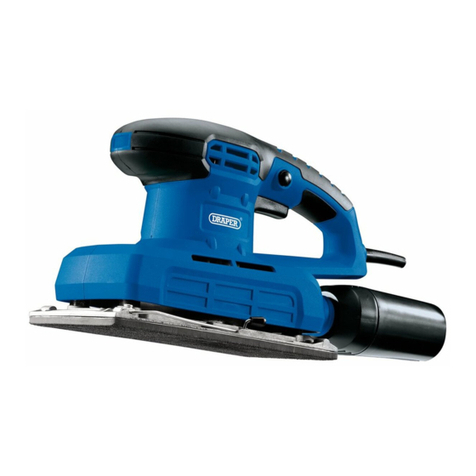
Draper
Draper 57941 User manual

Draper
Draper 61322 User manual

Draper
Draper 5249PRO Firmware update

Draper
Draper PT135 User manual

Draper
Draper PT130A User manual
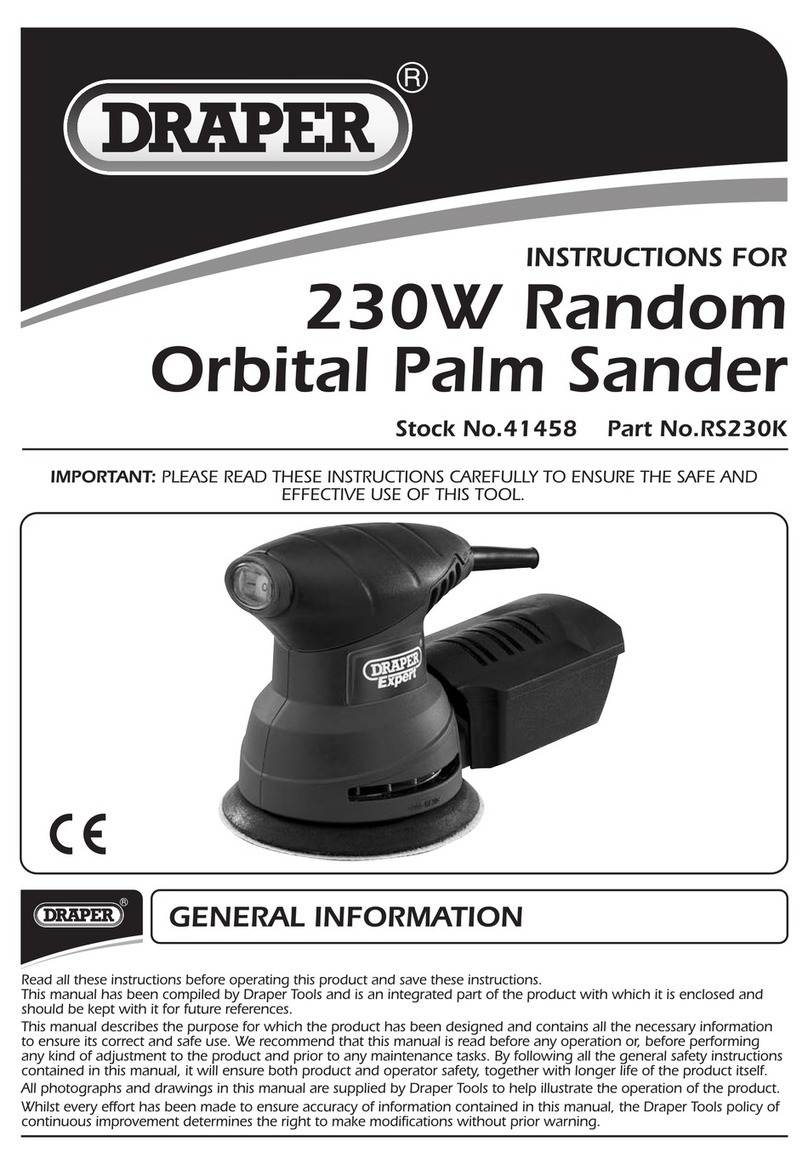
Draper
Draper RS230K User manual

Draper
Draper PT141 User manual
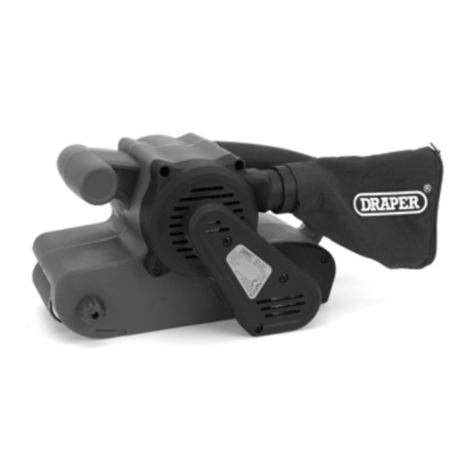
Draper
Draper PT75B User manual

Draper
Draper PT180A User manual
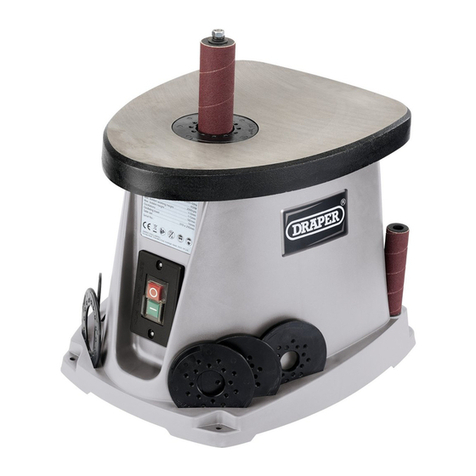
Draper
Draper BBS450A User manual
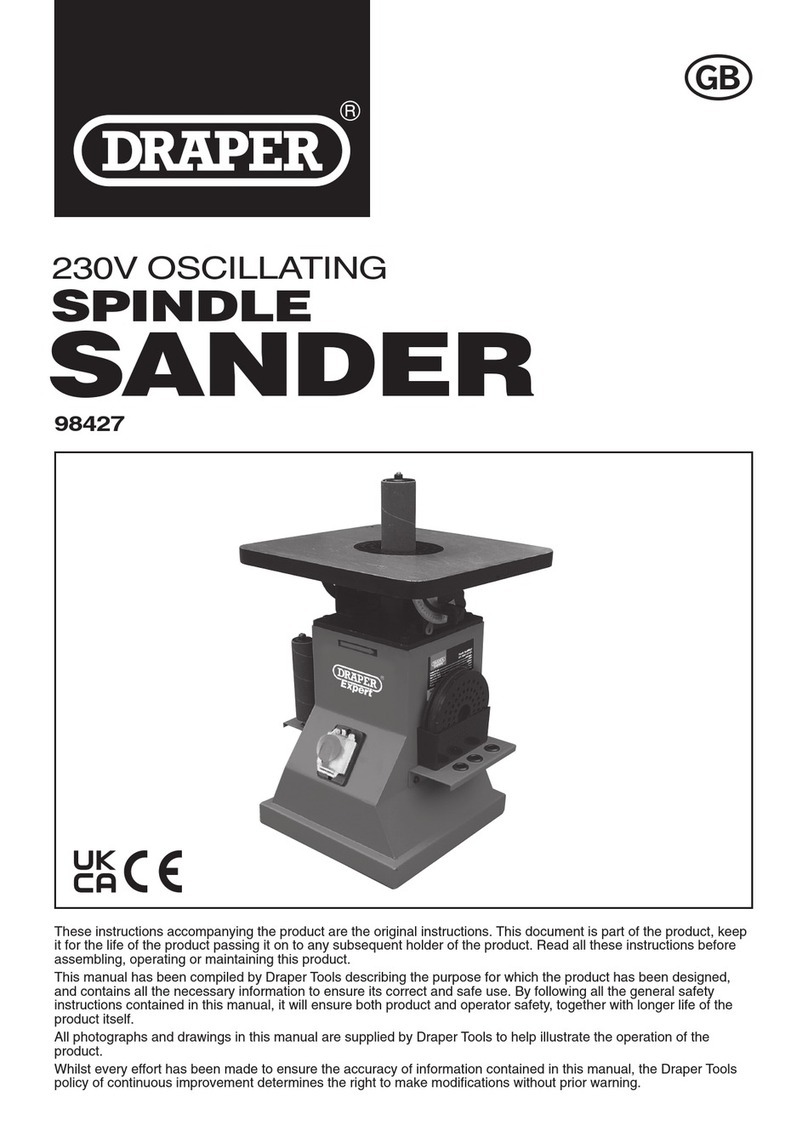
Draper
Draper 98427 User manual

Draper
Draper StormForce PT241SF User manual

Draper
Draper PT75 User manual
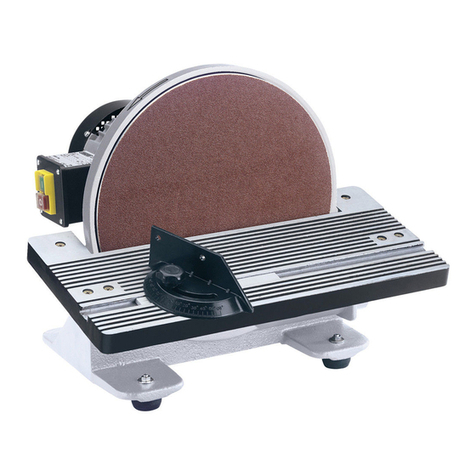
Draper
Draper DS305 User manual
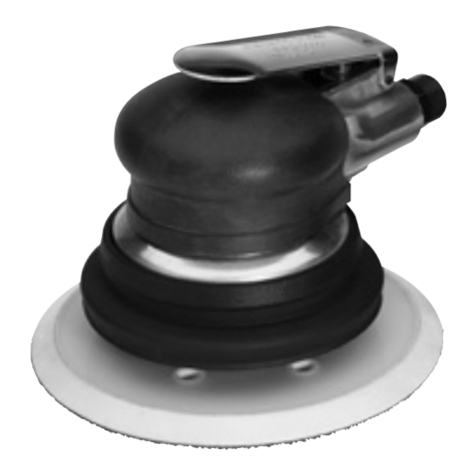
Draper
Draper 4416PRO User manual

Draper
Draper PT200A Operating manual

Draper
Draper BS100 User manual
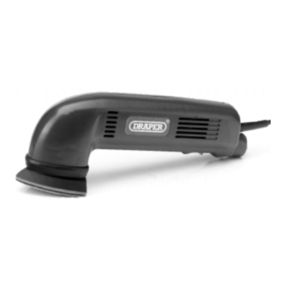
Draper
Draper PT260V User manual

Draper
Draper RS480KA User manual
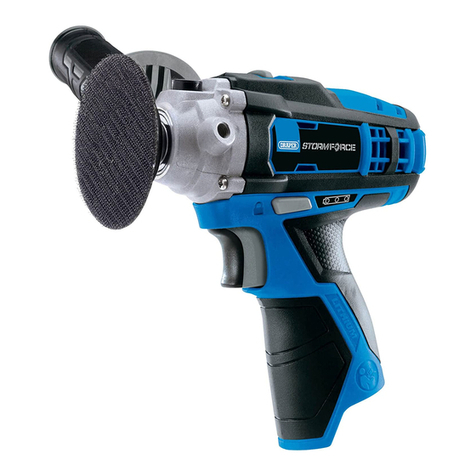
Draper
Draper Storm Force 70453 User manual
